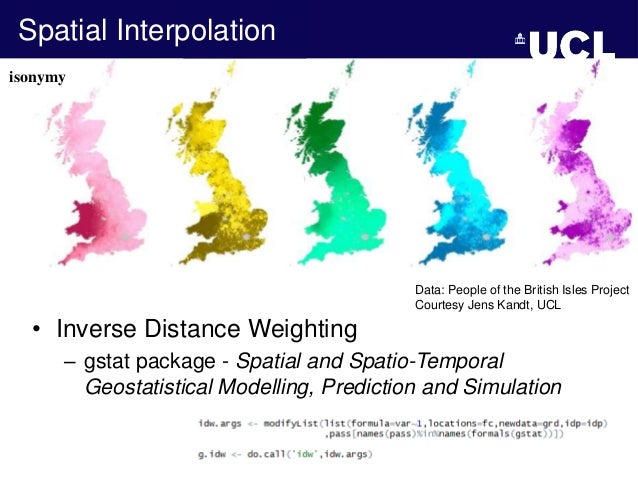R GSTAT PACKAGE DOWNLOAD
For example, try the following. Values form a gradient from west to east left to right Sine: R for Spatial Statistics. By using our site, you acknowledge that you have read and understand our Cookie Policy , Privacy Policy , and our Terms of Service. To leave a comment for the author, please follow the link and comment on their blog: R news and tutorials contributed by R bloggers. Full list of contributing R-bloggers. 
| Uploader: | Makazahn |
| Date Added: | 25 November 2006 |
| File Size: | 55.38 Mb |
| Operating Systems: | Windows NT/2000/XP/2003/2003/7/8/10 MacOS 10/X |
| Downloads: | 22406 |
| Price: | Free* [*Free Regsitration Required] |
You can change the parameters of the fit appropriately. Sign up or log in Sign up using Google. Home About RSS add your blog!
CRAN - Package gstat
gxtat Before a new release becomes available, you need to install the package from source:. The values for the psill and range look appropriate to me use the means. So here's my code so far: Recent Posts Create Animation in R: For this we will start using the "sp" library to first convert the "x" and "y" columns to coordinates and then create a bubble chart to plot the random values.
TheSurface Using R, we can also plot the variance in the gsta. Next, we want to fit a variogram model to the binned data and add it to our graph.
gstat: Spatial and Spatio-Temporal Geostatistical Modelling, Prediction and Simulation
I can't even make it to the next step which is: I would say it's unwise to try to fit a variogram to just 4 points. Vaibhav Chhipa Vaibhav Chhipa 16 1 1 bronze badge.
Next, we are going to create a simple variogram. California Soil Lab Kriging Example.
I'll definitely be researching a lot more. And cutoff values can be specified as well if the default value does not suffice:.
Subscribe to RSS
Sign up to join this community. Create directional variograms at 0, 45, 90, degrees from north y-axis TheVariogram Notice that there is autocorrelation in all the directions except degrees or where you can follow a line where all the values are the same.
I was trying to fit the variogram parameters of an empirical paclage using GLS Generalized Least Squares fitting method.

If you print the "TheVariogramModel" variable, you'll see the new values for the nugget and sill. This article was first published on Bart Rogiersand kindly contributed to R-bloggers.
The data looks like this: This "bins" the data together by breaking up the distances between each of the points based on a "lag" size between the distances. The best answers are voted up and rise to the top. By using our site, you acknowledge that you have read and understand our Cookie PolicyPrivacy Policyand our Terms of Service.
To leave a comment for the author, please follow the link and comment on their blog: Finally, my colleague was interested in the performance of the algorithm.
The fitted variogram will look something like this: Can you share the data? However, if you really want to do that, you can do something like this: The Ultimate Introduction incl.
Gradient For this example, use the gradient data and see how different the plots are.
Values are based on a sine wave along a diagonal from the southwest to the northeast lower left to the upper right These were created in Excel by the following steps: You will likely get a warning here about a singular fit, which is probably because of very few points.

Комментарии
Отправить комментарий